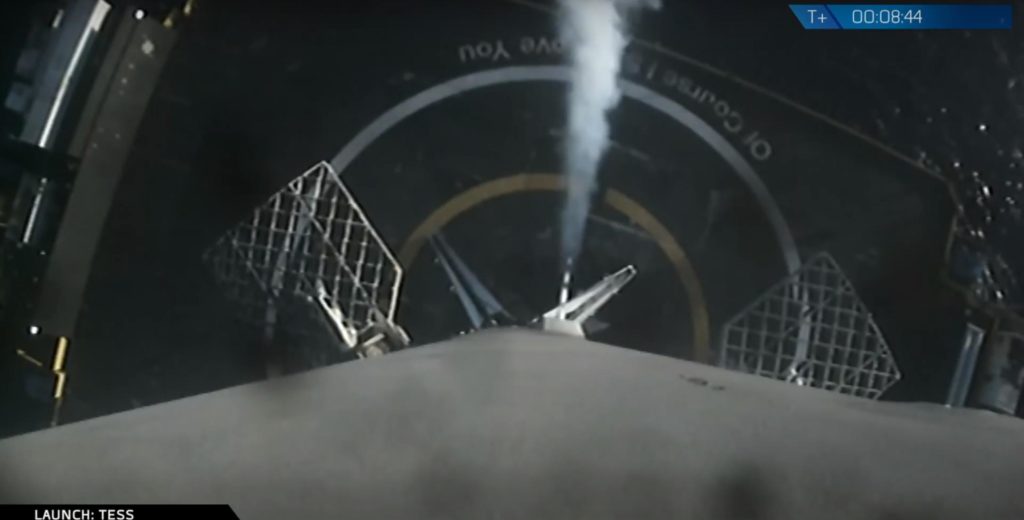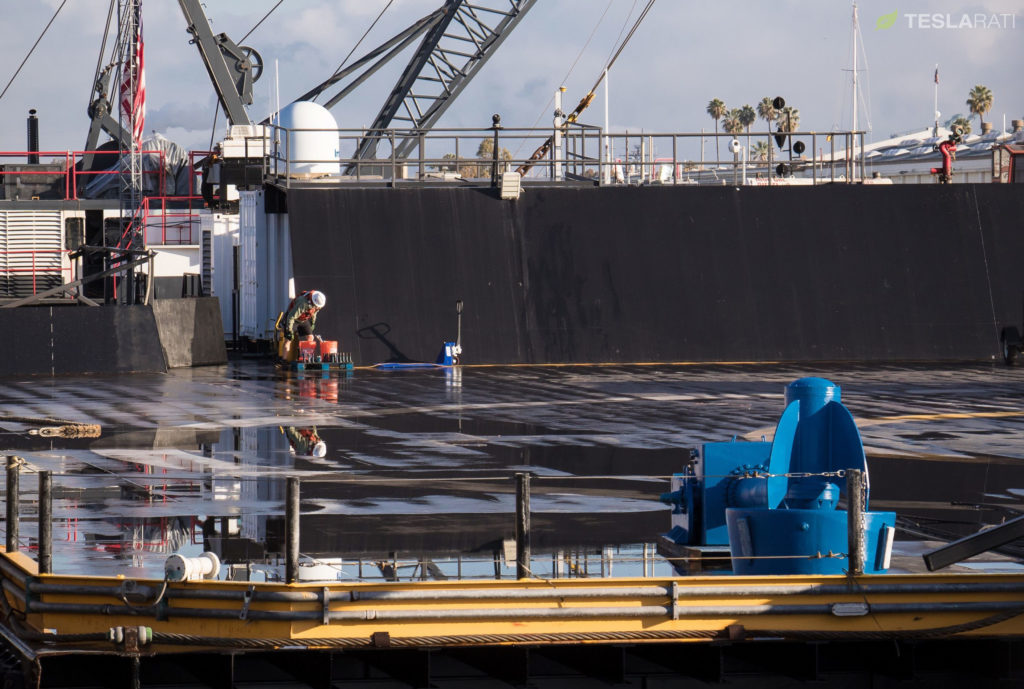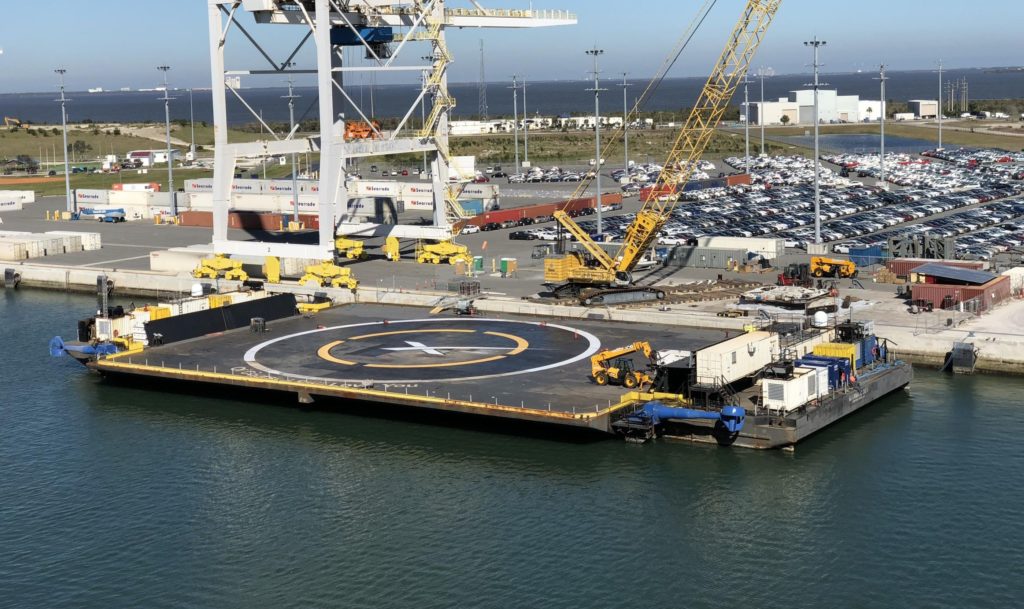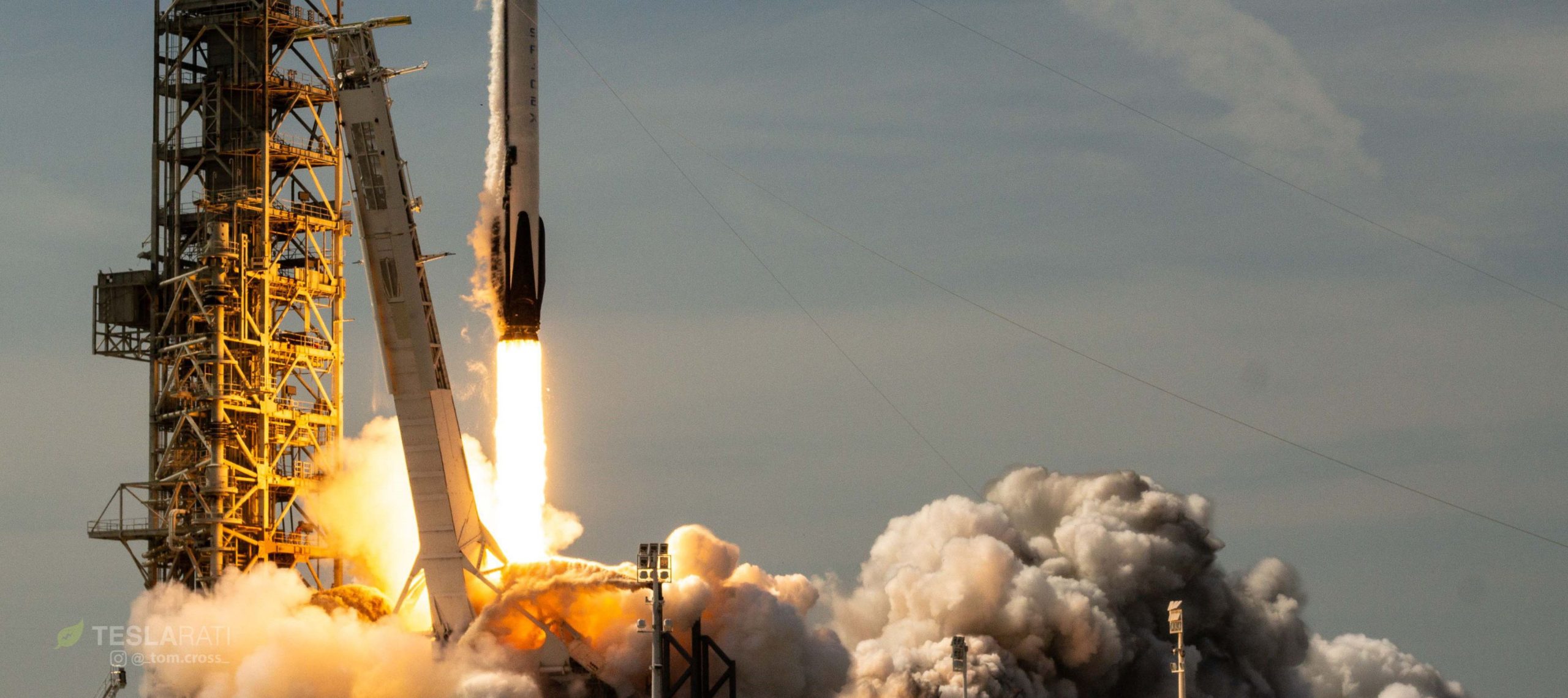
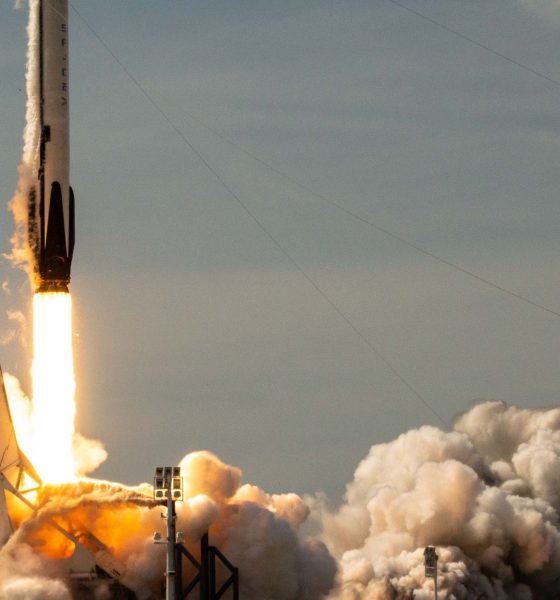
News
SpaceX’s Falcon 9 Block 5 fleet preps for dual drone ship booster landings
SpaceX engineers and technicians have just completed the second on-pad static fire of a Falcon 9 Block 5 booster, and another test is scheduled on the opposite coast for a different upgraded booster in roughly two days.
Penciled in on July 22 and July 25, these imminent back to back launches will mark the effective beginning of the highly-reusable Block 5 era now that all older versions have flown for the last time. Crucially, the practice of intentionally expending reused boosters will almost certainly come to an end for the indefinite future, beginning with these next missions. Both new cores will land aboard drone ship pair Just Read The Instructions (JRTI; West Coast) and Of Course I Still Love You (OCISLY; East Coast), and both autonomous vessels will be simultaneously stationed at sea for the second time ever.
Static fire test of Falcon 9 complete—targeting early morning launch on Sunday, July 22 of Telstar 19 VANTAGE from Pad 40 in Florida.
— SpaceX (@SpaceX) July 18, 2018
This rare dual drone ship deployment will likely become a regular occurrence for SpaceX Falcon 9 and Falcon Heavy recoveries over the course of the rest of 2018 and 2019, as higher rates of launch from both East and West coast launch facilities and the unlikelihood of a Block 5 booster being expended will translate to a much greater need for the giant rocket recovery vessels.
In fact, the 7-10 days it takes drone ships to travel from their ports of call to booster landing points and back to port again will likely be the most insurmountable constraint on launch cadence, at least for the Falcon family – high energy missions could only be completed every ten or so days on the East Coast, at least until a third drone ship is brought online. To be named A Shortfall of Gravitas (ASoG), a third autonomous spaceport drone ship (ASDS) is in fact planned as an expansion of SpaceX’s fleet, although it’s unknown if the vessel is under construction now, nor when exactly it’s expected to enter service.
SpaceX’s next three missions from its Florida-based LC-40 pad all happen to feature Block 5 Falcon 9 boosters tasked with placing heavy communications satellites in high-energy orbits, and all three launches are currently paced roughly two weeks apart – July 22, August 2, and August 18. That consistent two-week cadence on SpaceX’s launch schedule is for the most part driven equally by launchpad readiness and drone ship availability, both of which require some amount of refurbishment or maintenance after launches/landings.
On the West Coast will be the launch of Iridium NEXT-7 on July 25, carrying ten Iridium NEXT satellites atop a Block 5 booster. That booster – as well as at least two of the three East coast boosters – will be fresh from the factory, conducting (hopefully) the first of many future missions apiece. Excitingly, the planned recovery attempt after Iridium-7 will bring to an end a nearly 10-month drought of rocket landings aboard drone ship JRTI. Further, it looks like chances are good that Iridium-7 will also see recovery vessel Mr Steven break in his massive new net and arms in with an attempted catch of a Falcon 9 fairing half.
- A SpaceX technician works aboard the rain-soaked drone ship Just Read The Instructions, March 2018. (Pauline Acalin)
- The drone ship Of Course I Still Love You spotted in Port Canaveral, FL last December. (Instagram /u/ johnabc123)
- Mr Steven testing his new net in a series of sea trials, July 11
Follow us for live updates, peeks behind the scenes, and photos from Teslarati’s East and West Coast photographers.
Teslarati – Instagram – Twitter
Tom Cross – Twitter
Pauline Acalin – Twitter
Eric Ralph – Twitter

News
Tesla supplier Samsung preps for AI5 production with latest move
According to a new report from Sedaily, Samsung is accelerating its preparation for U.S. production of the AI5 chips by hiring veteran engineers for its Customer Engineering team.
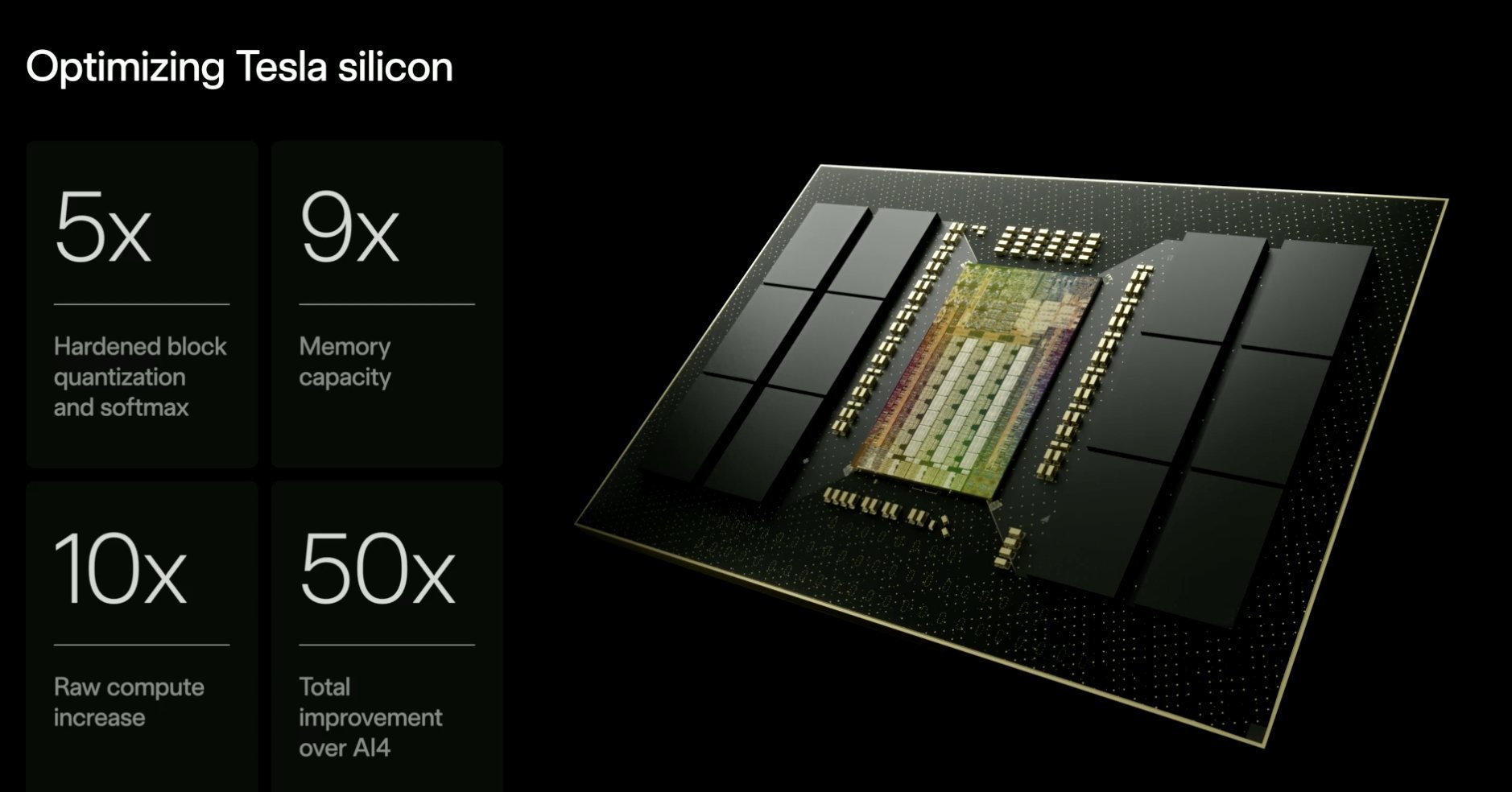
Tesla supplier Samsung is preparing to manufacture the AI5 chip, which will launch the company’s self-driving efforts even further, with its latest move.
According to a new report from Sedaily, Samsung is accelerating its preparation for U.S. production of the AI5 chips by hiring veteran engineers for its Customer Engineering team, which will help resolve complex foundry challenges, stabilize production and yields, and ensure manufacturing goes smoothly for the new project.
The hiring push signals that Tesla’s AI5 project is moving forward quickly at Samsung, which was one of two suppliers to win a contract order from the world’s leading EV maker.
🚨🚨 FIRST LOOK at Tesla’s AI5 chip, which will be available in late 2026 or early 2027 pic.twitter.com/aLomUuifhT
— TESLARATI (@Teslarati) November 6, 2025
TSMC is the other. TSMC is using its 3nm process, reportedly, while Samsung will do a 2nm as a litmus test for the process.
The different versions are due to the fact that “they translate designs to physical form differently,” CEO Elon Musk said recently. The goal is for the two to operate identically, obviously, which is a challenge.
Some might remember Apple’s A9 “Chipgate” saga, which found that the chips differed in performance because of different manufacturers.
The AI5 chip is Tesla’s next-generation hardware chip for its self-driving program, but it will also contribute to the Optimus program and other AI-driven features in both vehicles and other projects. Currently, Tesla utilizes AI4, formerly known as HW4 or Hardware 4, in its vehicles.
Tesla teases new AI5 chip that will revolutionize self-driving
AI5 is specialized for use by Tesla as it will work in conjunction with the company’s Neural Networks, focusing on real-time inference to make safe and logical decisions during operation.
Musk said it was an “amazing design” and an “immense jump” from Tesla’s current AI4 chip. It will be roughly 40 times faster, and have 8 times the raw compute, with 9 times the memory capacity. It is also expected to be three times as efficient per watt as AI4.
“We’re going to focus TSMC and Samsung, initially, on AI5. The AI5 chip, design by Tesla, it’s an amazing design. I’ve spent almost every weekend for the last few months with the chip team working on AI5.”
It will be 40x better than the AI4 chip, Musk says.
— TESLARATI (@Teslarati) October 22, 2025
AI5 will make its way into “maybe a small number of units” next year, Musk confirmed. However, it will not make its way to high-volume production until 2027. AI5 is not the last step, either, as Musk has already confirmed AI6 would likely enter production in mid-2028.
News
Tesla discloses interesting collaboration partner for Supercharging
This BOXABL collaboration would be a great way to add a rest stop to a rural Supercharging location, and could lead to more of these chargers across the U.S.
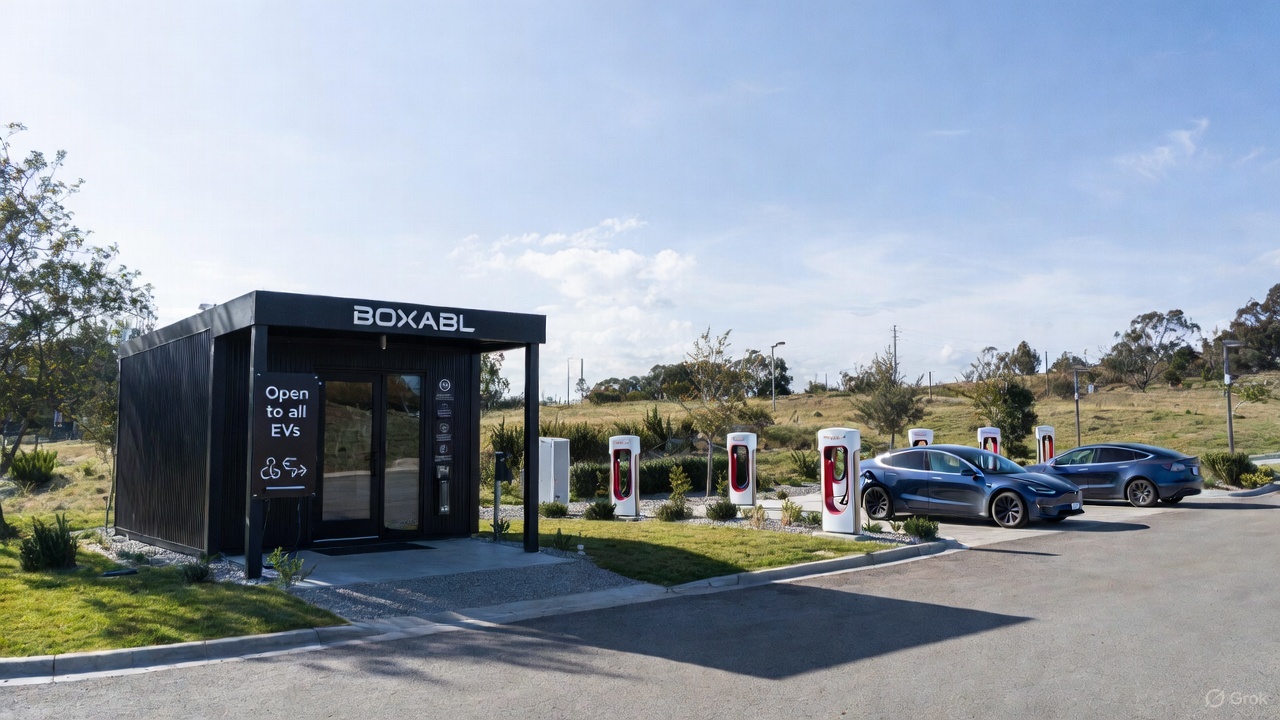
Tesla disclosed an interesting collaboration partner in an SEC filing, which looks like an indication of a potential project at Supercharger sites.
Tesla said on Tuesday in the filing that it was entering an agreement with BOXABL to design and build a Micromenity structure. Simply put, this is a modular building, usually a few hundred square feet in size, and it has been seen at Superchargers in Europe.
In Magnant, France, Tesla opened a small building at a Supercharger that is available to all EV owners. There are snacks and drinks inside, including ice cream, coffee, a gaming console, and restrooms. It gives people an opportunity to get up and out of their cars while charging.
This building was not built by BOXABL, but instead by bk World Lounges. It is likely the final Supercharging stop before people get to Paris, as it is located 250 kilometers, or 155 miles, from the City of Light.
Voir cette publication sur Instagram
Magnant has 56 stalls, so it is a large Supercharging stop compared to most. The building could be a sign of things to come, especially as Tesla has opened up larger Supercharger stations along major roadways.
It is for just a single building, as the Scope of Work within the filing states “a comprehensive package for one Micromenity building.”
NEWS: BOXABL, a company that creates modular, prefabricated buildings, has entered into an agreement with @Tesla.
This is Tesla formally contracting BOXABL to design, engineer, and build a pilot “Micromenity” structure, a compact, modular building unit.
While some info in the… pic.twitter.com/RabJczGpEp
— Sawyer Merritt (@SawyerMerritt) December 9, 2025
Superchargers are commonly located at gas stations, shopping centers, and other major points of interest. However, there are some stops that are isolated from retail or entertainment.
This BOXABL collaboration would be a great way to add a rest stop to a rural Supercharging location, and could lead to more of these chargers across the U.S.
Tesla has done a lot of really great things for Supercharging this year.
Along with widespread expansion, the company launched the “Charging Passport” this week, opened the largest Supercharger in the world in Lost Hills, California, with 168 chargers, opened the Tesla Diner, a drive-in movie restaurant in Los Angeles, and initiated access to the infrastructure to even more automakers.
Elon Musk
Tesla CEO Elon Musk confirms Robotaxi safety monitor removal in Austin: here’s when
Musk has made the claim about removing Safety Monitors from Tesla Robotaxi vehicles in Austin three times this year, once in September, once in October, and once in November.
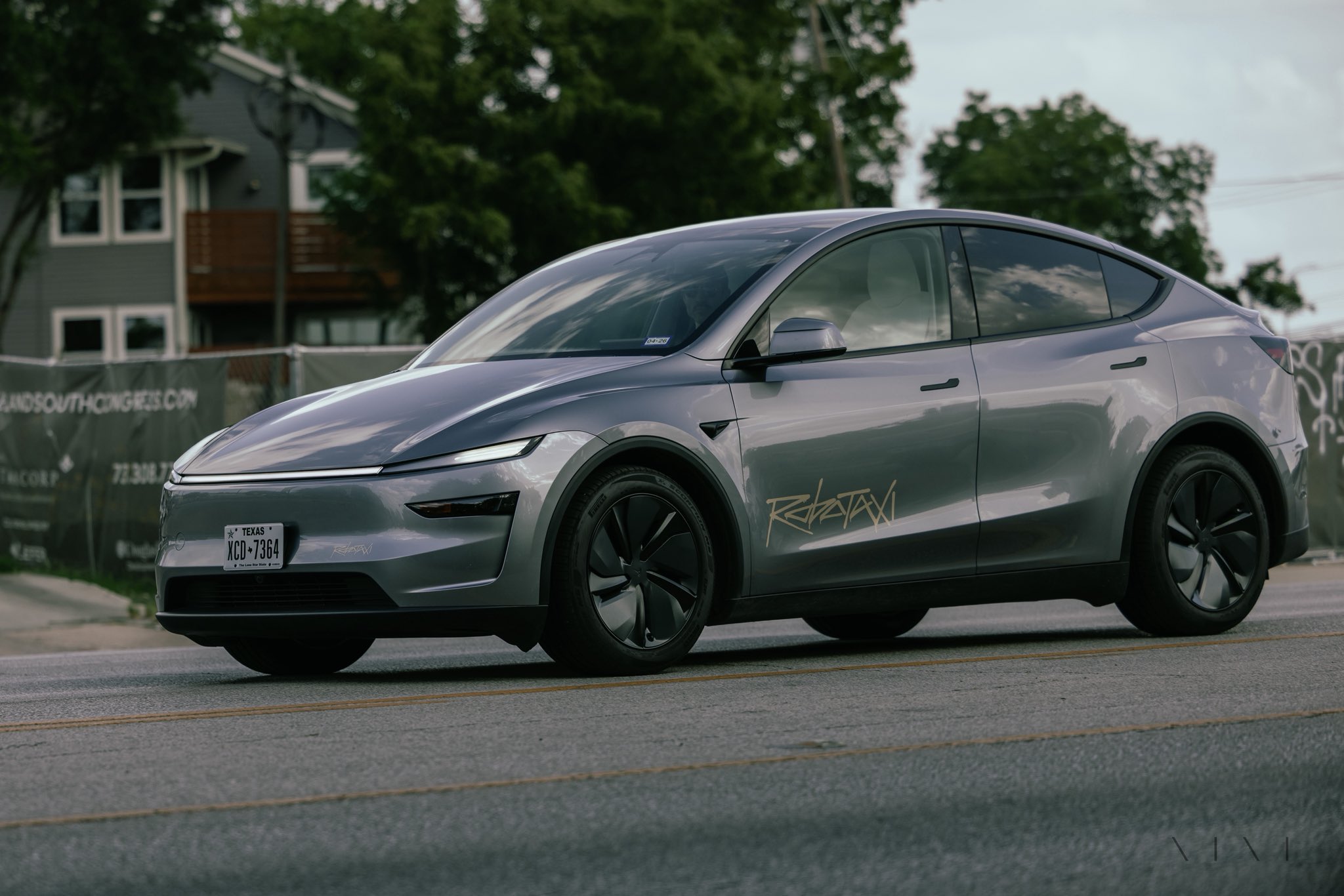
Tesla CEO Elon Musk confirmed on Tuesday at the xAI Hackathon that the company would be removing Safety Monitors from Robotaxis in Austin in just three weeks.
This would meet Musk’s timeline from earlier this year, as he has said on several occasions that Tesla Robotaxis would have no supervision in Austin by the end of 2025.
On Tuesday, Musk said:
“Unsupervised is pretty much solved at this point. So there will be Tesla Robotaxis operating in Austin with no one in them. Not even anyone in the passenger seat in about three weeks.”
Musk has made the claim about removing Safety Monitors from Tesla Robotaxi vehicles in Austin three times this year, once in September, once in October, and once in November.
In September, he said:
“Should be no safety driver by end of year.”
The safety driver is just there for the first few months to be extra safe.
Should be no safety driver by end of year.
— Elon Musk (@elonmusk) September 4, 2025
On the Q3 Earnings Call in October, he said:
“We are expecting ot have no safety drivers in at least large parts of Austin by the end of this year.”
Finally, in November, he reiterated the timeline in a public statement at the Shareholder Meeting:
“I expect Robotaxis to operate without safety drivers in large parts of Austin this year.”
Currently, Tesla uses Safety Monitors in Austin in the passenger’s seat on local roads. They will sit in the driver’s seat for highway routes. In the Bay Area ride-hailing operation, there is always a Safety Monitor in the driver’s seat.
Three weeks would deliver on the end-of-year promise, cutting it close, beating it by just two days. However, it would be a tremendous leap forward in the Robotaxi program, and would shut the mouths of many skeptics who state the current iteration is no different than having an Uber.
Tesla has also expanded its Robotaxi fleet this year, but the company has not given exact figures. Once it expands its fleet, even more progress will be made in Tesla’s self-driving efforts.
